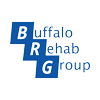Understanding Torticollis in Children
Or does your child favor looking in one direction over the other?
If so, this could be a result of torticollis.
Keep reading to learn more about the condition and how to treat or prevent it.
What is Torticollis?
Torticollis in children occurs when the muscles on one side of the neck become shortened, leading to the head tilting to one side and difficulty in turning it in the opposite direction.
This condition can manifest shortly after birth and is most often seen between the ages of three and six months.
Signs of torticollis can include:
- Head tilting to one side consistently
- Limited range of motion in the neck
- Difficulty turning the head in both directions
- Preferences of feeding or looking in one direction
Preventing Torticollis
While some cases of torticollis may be unavoidable due to factors such as positioning in the womb or birth trauma, there are steps parents and caregivers can take to reduce the risk:
- Promote tummy time: Encourage supervised tummy time for infants to strengthen neck muscles and prevent flattening of the head.
- Vary positions: Avoid prolonged periods in one position, such as always carrying the baby on the same side or using the same side for breastfeeding.
- Provide ample opportunities for movement: Allow infants to explore different positions and encourage reaching and grasping for objects to promote balanced muscle development.
- Consult with a pediatrician: Regular check-ups with a pediatrician can help monitor your child’s development and address any concerns early on.
Treating Torticollis
Early intervention is crucial in managing torticollis to prevent long-term complications.
Treatment may include:
- Physical therapy: A pediatric physical therapist can provide exercises and stretches to help loosen tight neck muscles and improve range of motion.
- Positioning techniques: Implementing specific positioning techniques during feeding, sleeping, and playtime can help encourage proper head alignment.
- Orthotic devices: In some cases, orthotic devices such as neck braces or helmets may be recommended to support the head and neck and promote symmetrical growth.
Torticollis in children can pose challenges, but with early recognition and appropriate intervention, the majority of cases can be effectively managed.
By staying vigilant for signs of torticollis, implementing preventive measures, and seeking prompt medical attention if needed, parents and caregivers can help their little ones thrive and achieve optimal neck mobility and development.
Is your child displaying signs of torticollis?
If you’re concerned about torticollis and your child’s physical development or have questions about Pediatric Physical Therapy, Buffalo Rehab Group can help.
Our dedicated team is here to provide guidance and support tailored to your child’s unique needs. Contact us today, and let’s ensure a bright and healthy future for your little one!
